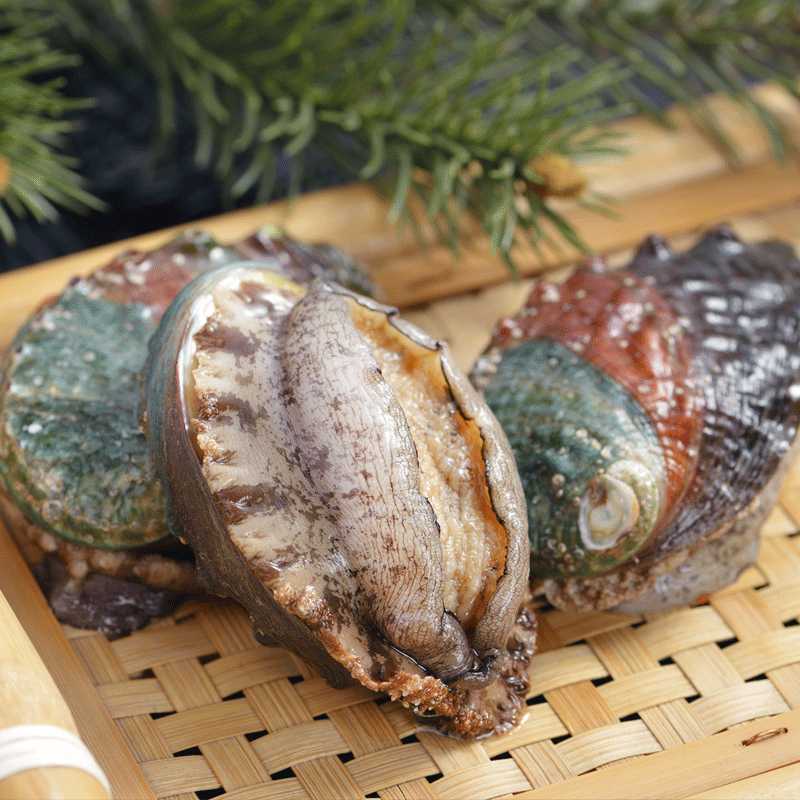We use cookies to enhance your experience. By continuing to browse this site you agree to our use of cookies. More info.
By clicking "Allow All" you agree to the storing of cookies on your device to enhance site navigation, analyse site usage and support us in providing free open access scientific content. More info. Wild Abalone

In a recent study published in Frontiers in Immunology, researchers investigated the use of herring row oil to treat psoriasis, a non-communicable skin disease. Conventional psoriasis treatment, while effective, is prone to several side effects, necessitating the discovery of novel side-effect-free interventions.
The results of this study identify herring roe oil as a potential future psoriasis therapy, with the oil observed to cause numerous beneficial modifications in cytokine networks and immune cells of individuals afflicted by the condition.
Psoriasis is a non-communicable, immune-mediated, lifelong skin disease characterized by rashes with itchy, scaly patches, most commonly on the knees, elbows, trunk, and scalp. Psoriasis in populations can vary widely in severity, with even the same individual depicting variable disease symptoms throughout their lives.
The condition is estimated to affect 125 million people globally, with no cure currently available. Psoriasis is associated with numerous co-morbidities, including cardiometabolic diseases, psoriatic arthritis, gastrointestinal diseases, chronic kidney disease, and psychosocial disorders.
Conventional, severity-specific treatments for the condition remain primarily topical, intended to suppress the immune response and control symptoms. While novel systemic treatments biologicals have benefitted patients suffering from severe disease manifestations, 80% of patients with mild to moderate psoriasis present low medication adherence due to topical agents being prone to harmful side effects.
Recently, research has investigated omega-3 polyunsaturated fatty acids (ω3-PUFA), biomolecules commonly found in fish and seafood with known immunomodulatory effects, as alternative side-effect-free alternatives to topical psoriasis interventions. Both clinical and in vivo animal models have been used to test the efficacy of ω3-PUFAs; however, their findings remain inconclusive, with some research finding no improvements in suppressing psoriasis symptoms while others note reductions in scaling, itching, erythema, and infiltration.
Psoriasis Area Severity Index (PASI) scores remain the gold standard for measuring the severity and extent of the condition. Previous work by the current study group noted PASI score improvements in patients treated with herring roe oil (HRO) at 26 and 65 weeks following regular diet supplementation. The immunological effects of this interaction remain poorly understood, necessitating research into the biological modality of future HRO therapies.
The present study aimed to elucidate the relationship between symptom severity in individuals with mild psoriasis (PSAI <10) and plasma inflammatory cytokine levels before, during, and after HRO diet supplementation. A 26-week-long placebo-controlled, randomized, double-blind study methodology was employed. The study population comprised 64 patients admitted to the Haukeland University Hospital, Norway.
“Each HRO capsule contained 292 mg polyunsaturated fatty acids (total ω-3): 22% eicosapentaenoic acid (EPA, 20:5 ω-3) and 66% docosahexaenoic acid (DHA, 22:6 ω-3), where approximately 35% of both was bound to phospholipids, including phosphatidylcholine. Each placebo capsule contained medium chain triglycerides: Coconut oil high in caprylic acid (C8:0) and capric acid (C10:0). The same type 590 mg softgel capsule was filled with active substance or placebo. The total daily dose of lipids was 5.9 g, of which 2.6 g was active substance.”
Participants were initially enrolled as a part of the PSORAX 35 study to investigate the effects of psorax, an herbal bioactive showing promise in beneficially altering peripheral blood immune cell populations in psoriasis patients. Of the 64 patients recruited for this study, 58 met the inclusion criteria of early-life disease onset, no psoriatic arthritis co-morbidity, and an absence of preexisting immunomodulatory drugs and treatments affecting lipid metabolism (especially corticosteroids and antivirals) and were included in the analysis. Participants were randomly assigned to ‘case’ (HRO treatment; n = 28) and ‘control’ (placebo treatment; n = 30) cohorts.
Peripheral blood and plasma samples were collected at 0-, 12-, 26-, and 65-weeks following treatment initiation. Flow cytometry was employed to identify and characterize T cells, B cells, monocytes, NK, and NKT immune cell populations. A custom-designed Human Luminex Discovery Assay was used to identify and describe the cytokine compositions of all samples.
Statistical analyses of results included the Mann-Whitney U test to compare between-cohort Luminex and flow-cytometry results. The Wilcoxon signed-rank test for paired samples elucidated differences in within-group PASI and Dermatology Life Quality Index (DLQI) scores before and after HRO/placebo supplementation. Finally, the interaction between psoriasis severity and cytokines was evaluated using Spearman’s correlation.
Analysis of peripheral blood immune cell populations revealed that, despite the overall composition of cells varying insignificantly between case and control cohorts, monocyte populations in the former were significantly upregulated compared to control participants at week 26 onwards. In contrast, CD107a+CD8+ TTD and CD107a+CD8+ T cells were found at much higher frequencies in control patients compared to those on HRO supplementation regimes.
Cytokine level analysis of long-term (65 weeks long) HRO-supplemented patients identified that CCL2 levels significantly decreased and CCL5, CD25/sIL-2R, CXCL10, and IFN-γR1 levels increased by the end of the study period compared to baseline levels at study initiation.
PSAI and DLQI scores were found to improve in the case group by week 65 compared to no improvements in the control cohort. Correlation analysis found a moderate negative correlation (r = -0.4182) between IFN-γ R1 plasma levels and PASI scores as early as week 12 following treatment. Eicosapentaenoic acid (EPA) and docosahexaenoic acid (DHA), key biologicals found in ω3-PUFA, were found to limit psoriasis and promote the reversal of disease-induced skin inflammation.
Despite this study presenting noteworthy limitations of Peripheral Blood Mononuclear Cells (PBMCs) not being available at week 65 and a relatively small sample population (n = 58), findings suggest that HRO could form an essential psoriasis therapy, either solely or in combination with conventional treatments, for psoriasis in the future.
In the present study, researchers used a placebo-controlled, randomized, double-blind study methodology to investigate the benefits of HRO supplementation in treating psoriasis, a common and chronic skin ailment. They used whole blood and plasma cell assays in tandem with flow cytometry to analyze immunological cell compositions across patients treated with HRO-supplemented diets versus those devoid of ω3-PUFA supplementation. Their results suggest that EPA and DHA present in HRO can significantly alter existing monocyte densities and activate critical cytokine pathways, resulting in improved treatment outcomes in case participants compared to controls.
…the use of HRO as a supplementary treatment option in patients with mild psoriasis is a promising treatment option for this patient group. Future studies exploring simultaneously immune cells in circulation and skin biopsy specimens in a larger number of psoriasis patients and healthy controls might shed further light on the utility of HRO.”
Posted in: Medical Research News | Medical Condition News
Tags: Arthritis, Assay, Biopsy, Blood, Cardiometabolic, CCL2, CCL5, Cell, Chronic, Chronic Kidney Disease, Coconut, CXCL10, Cytokine, Cytokines, Cytometry, Dermatology, Diet, Docosahexaenoic Acid, Drugs, Efficacy, Erythema, Fatty Acids, Fish, Flow Cytometry, Hospital, Immune Response, Immunology, Immunomodulatory, in vivo, Inflammation, Kidney, Kidney Disease, Lipids, Medication Adherence, Metabolism, Monocyte, Placebo, Psoriasis, Psoriatic, Psoriatic Arthritis, Research, Skin
Hugo Francisco de Souza is a scientific writer based in Bangalore, Karnataka, India. His academic passions lie in biogeography, evolutionary biology, and herpetology. He is currently pursuing his Ph.D. from the Centre for Ecological Sciences, Indian Institute of Science, where he studies the origins, dispersal, and speciation of wetland-associated snakes. Hugo has received, amongst others, the DST-INSPIRE fellowship for his doctoral research and the Gold Medal from Pondicherry University for academic excellence during his Masters. His research has been published in high-impact peer-reviewed journals, including PLOS Neglected Tropical Diseases and Systematic Biology. When not working or writing, Hugo can be found consuming copious amounts of anime and manga, composing and making music with his bass guitar, shredding trails on his MTB, playing video games (he prefers the term ‘gaming’), or tinkering with all things tech.
Please use one of the following formats to cite this article in your essay, paper or report:
Francisco de Souza, Hugo. (2023, September 12). Herring roe oil's potential in psoriasis treatment. News-Medical. Retrieved on September 28, 2023 from https://www.news-medical.net/news/20230912/Herring-roe-oils-potential-in-psoriasis-treatment.aspx.
Francisco de Souza, Hugo. "Herring roe oil's potential in psoriasis treatment". News-Medical. 28 September 2023. <https://www.news-medical.net/news/20230912/Herring-roe-oils-potential-in-psoriasis-treatment.aspx>.
Francisco de Souza, Hugo. "Herring roe oil's potential in psoriasis treatment". News-Medical. https://www.news-medical.net/news/20230912/Herring-roe-oils-potential-in-psoriasis-treatment.aspx. (accessed September 28, 2023).
Francisco de Souza, Hugo. 2023. Herring roe oil's potential in psoriasis treatment. News-Medical, viewed 28 September 2023, https://www.news-medical.net/news/20230912/Herring-roe-oils-potential-in-psoriasis-treatment.aspx.
In this interview conducted at SLAS EU 2023 in Brussels, Belgium, we spoke to Ulrike Kuenzel, Associate Director in the Functional Genomics department at AstraZeneca about the application of arrayed CRISPR screening for target identification and more.
Dr. Yingmin Zhu, Dr. Amy Sheng and Dr. Xuejiao Zhang
The baculovirus–insect cell expression system—insect cells used in conjunction with the baculovirus expression vector system (BEVS)— remains a crucial technology for manufacturing large and complex proteins. This eukaryotic expression system offers inherent safety, ease of scale-up, flexible product design, and versatility for a broad range of proteins.
In this interview conducted at SLAS EU 2023 in Brussels, Belgium, we spoke to Silvio Di Castro about his research, as well as the role of compound management in pharmaceutical research.
News-Medical.Net provides this medical information service in accordance with these terms and conditions. Please note that medical information found on this website is designed to support, not to replace the relationship between patient and physician/doctor and the medical advice they may provide.
News-Medical.net - An AZoNetwork Site

Capelin Roe Owned and operated by AZoNetwork, © 2000-2023